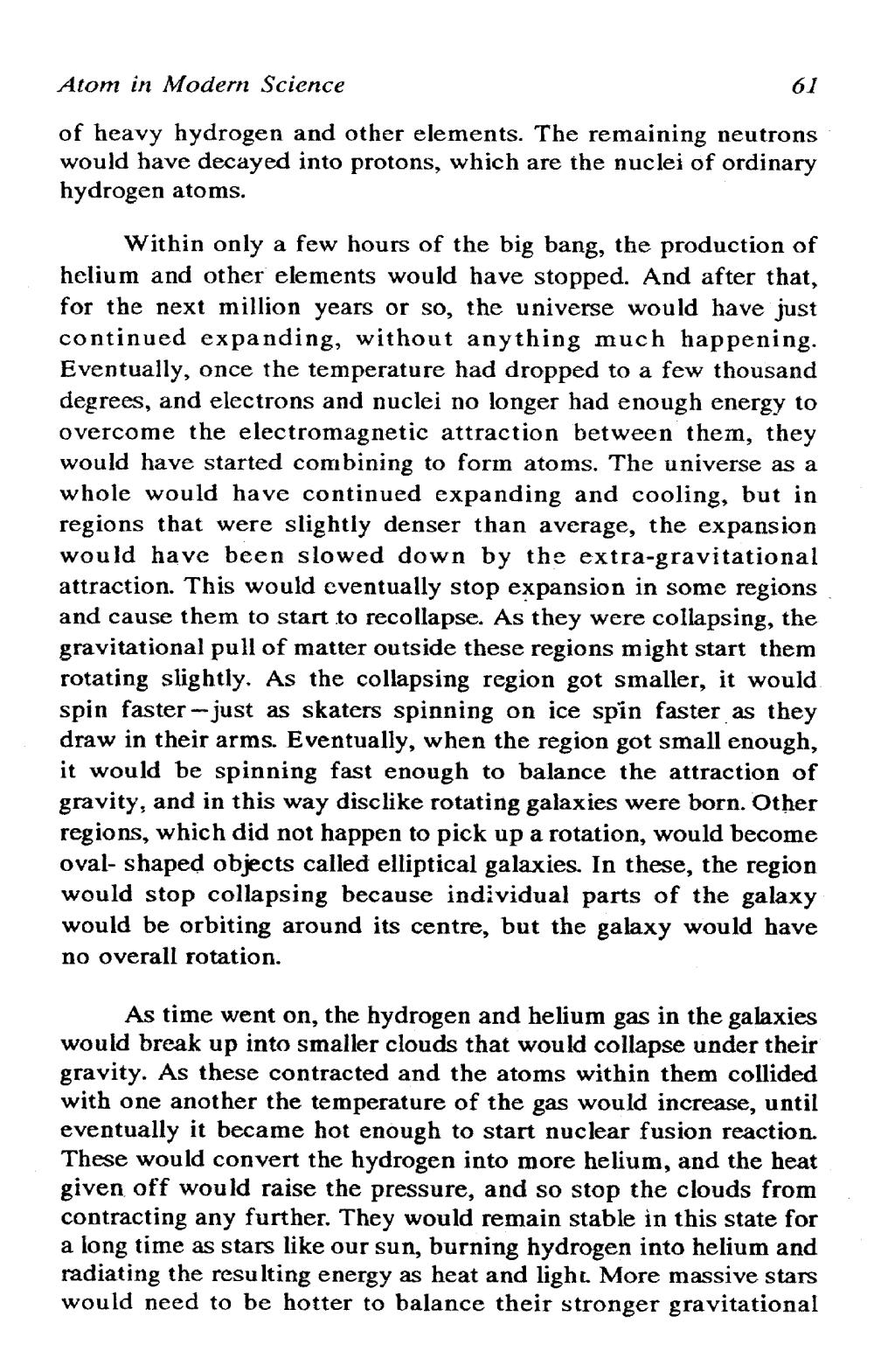________________
Atom in Modern Science
61
of heavy hydrogen and other elements. The remaining neutrons would have decayed into protons, which are the nuclei of ordinary hydrogen atoms.
Within only a few hours of the big bang, the production of helium and other elements would have stopped. And after that, for the next million years or so, the universe would have just continued expanding, without anything much happening. Eventually, once the temperature had dropped to a few thousand degrees, and electrons and nuclei no longer had enough energy to overcome the electromagnetic attraction between them, they would have started combining to form atoms. The universe as a whole would have continued expanding and cooling, but in regions that were slightly denser than average, the expansion would have been slowed down by the extra-gravitational
This would eventually stop expansion in some regions and cause them to start to recollapse. As they were collapsing, the gravitational pull of matter outside these regions might start them rotating slightly. As the collapsing region got smaller, it would spin faster -- just as skaters spinning on ice spin faster as they draw in their arms. Eventually, when the region got small enough, it would be spinning fast enough to balance the attraction of gravity, and in this way disclike rotating galaxies were born. Other regions, which did not happen to pick up a rotation, would become oval-shaped objects called elliptical galaxies. In these, the region would stop collapsing because individual parts of the galaxy would be orbiting around its centre, but the galaxy would have no overall rotation.
As time went on, the hydrogen and helium gas in the galaxies would break up into smaller clouds that would collapse under their gravity. As these contracted and the atoms within them collided with one another the temperature of the gas would increase, until eventually it became hot enough to start nuclear fusion reaction. These would convert the hydrogen into more helium, and the heat given off would raise the pressure, and so stop the clouds from contracting any further. They would remain stable in this state for a long time as stars like our sun, burning hydrogen into helium and radiating the resulting energy as heat and light. More massive stars would need to be hotter to balance their stronger gravitational




